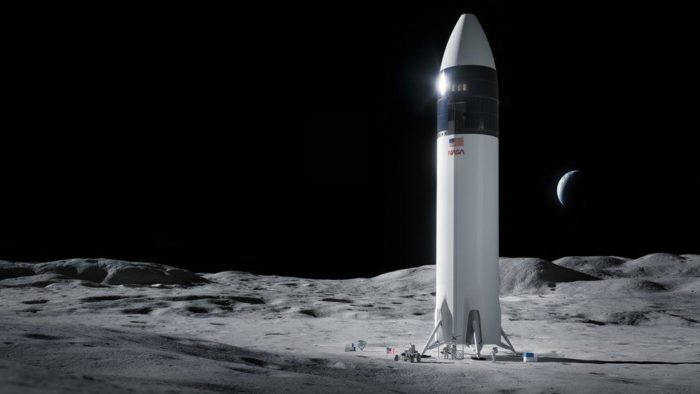Apr 19 2021
SpaceX Awarded Lunar Lander Contract
 I’ve been watching For All Mankind – a very interesting series that imagines an alternate history in which the Soviets beat the US to landing on the Moon, triggering an extended space race that puts us decades ahead of where we are now. By the 1980s we had a permanent lunar base and a reusable lunar lander, not to mention spacecraft with nuclear engines. Meanwhile, back in reality, we are approaching 50 years since any human has stepped foot on the moon.
I’ve been watching For All Mankind – a very interesting series that imagines an alternate history in which the Soviets beat the US to landing on the Moon, triggering an extended space race that puts us decades ahead of where we are now. By the 1980s we had a permanent lunar base and a reusable lunar lander, not to mention spacecraft with nuclear engines. Meanwhile, back in reality, we are approaching 50 years since any human has stepped foot on the moon.
But NASA does plan on returning to the Moon and staying there this time, with their Artemis mission. (In Greek mythology Artemis was the twin sister of Apollo.) Originally they planned to return to the Moon by 2028, then Trump asked them to move up the timeline to 2024. NASA dutifully complied, but this was never realistic and anyone who has been following Artemis knew this was not going to happen. And now NASA is admitting they will not be ready by 2024. But sometime likely in the latter half of this decade we will return to the Moon.
One of the last pieces to put into place is a lunar lander, something to get people from lunar orbit down to the surface of the Moon. NASA has finally awarded the contract to build this lander – to SpaceX. They are making no secret of the reason. SpaceX gave the lowest bid, by far. This is partly because the entire mission of SpaceX is to make space travel cheaper, mainly by using as many reusable parts as possible. Toward this end they perfected the technology for landing rockets vertically. The videos of Falcon rockets landing after launching satellites is still stunning. SpaceX also achieved a rating for their Dragon Crew capsule to actually carry people into space, and they have delivered astronauts to the ISS. Finally, SpaceX has already been developing their Starship design, which will be the basis of the new lander, which NASA is calling the Human Landing System (HLS).
Interestingly, a recent independent analysis found that the most efficient (only looking at efficiency) landing system using non-reusable parts was the Apollo system – a two-stage approach with a landing module and ascent module. However, if you use a renewable lander, then the one stage approach makes the most sense. That is in keeping with SpaceX’s philosophy, so it’s not surprising that they are taking that approach. I do wonder if they are going to use an actual Starship just outfitted for lunar landing, or are they going to make a new and smaller version? If the former, then it seems a bit odd that the HLS part of the system is a ship capable (theoretically) of doing the entire mission, from Earth surface to Lunar surface. That is Musk’s vision, single stage to destination for maximal reusability.
It makes me wonder if this is no accident. NASA plans on using the Space Launch System (SLS) carrying an Orion capsule, which is their deep space capsule, to get to the moon. There the Orion capsule will dock with the Lunar Gateway, a permanent orbiting lunar station. And from the Gateway they will take the HLS down to the lunar surface. The SLS is progressing and passing preliminary tests, but it has come under criticism for being way over budget. It also remains to be seen what will happen with new priorities from a new administration.
It does seem that the SLS is going to fly. The first mission, an uncrewed test mission to the Moon and back, is scheduled for November this year. If all goes well, and SLS performs without any hitches, then past criticism may be forgotten. But even if successful, it is an expensive system vulnerable to shifting political priorities (always a risk for NASA, and again plausible background for the premise of For All Mankind). I would therefore love to know if picking SpaceX and Starship was a way of hedging their bets. What if, in the end, Starship can get astronauts to the planned lunar base cheaper than SLS-Orion?
This is all happening at a time when NASA is very deliberately partnering with private space companies, which is part of their stated plan. The idea is that NASA will focus on new technology and new exploration, while private companies ride their coattails into tried-and-true territory like low-Earth orbit. Perhaps the Moon might become the purview of private companies much more quickly, leaving NASA to focus on Mars. But if Musk has his way, private companies may beat NASA to Mars.
Public-private collaboration seems like an excellent model for developing our space infrastructure, but this model is rapidly evolving. I think this is all good for space travel, but it does make it hard to predict what will happen. The 2020’s will be an interesting time for space enthusiasts.






